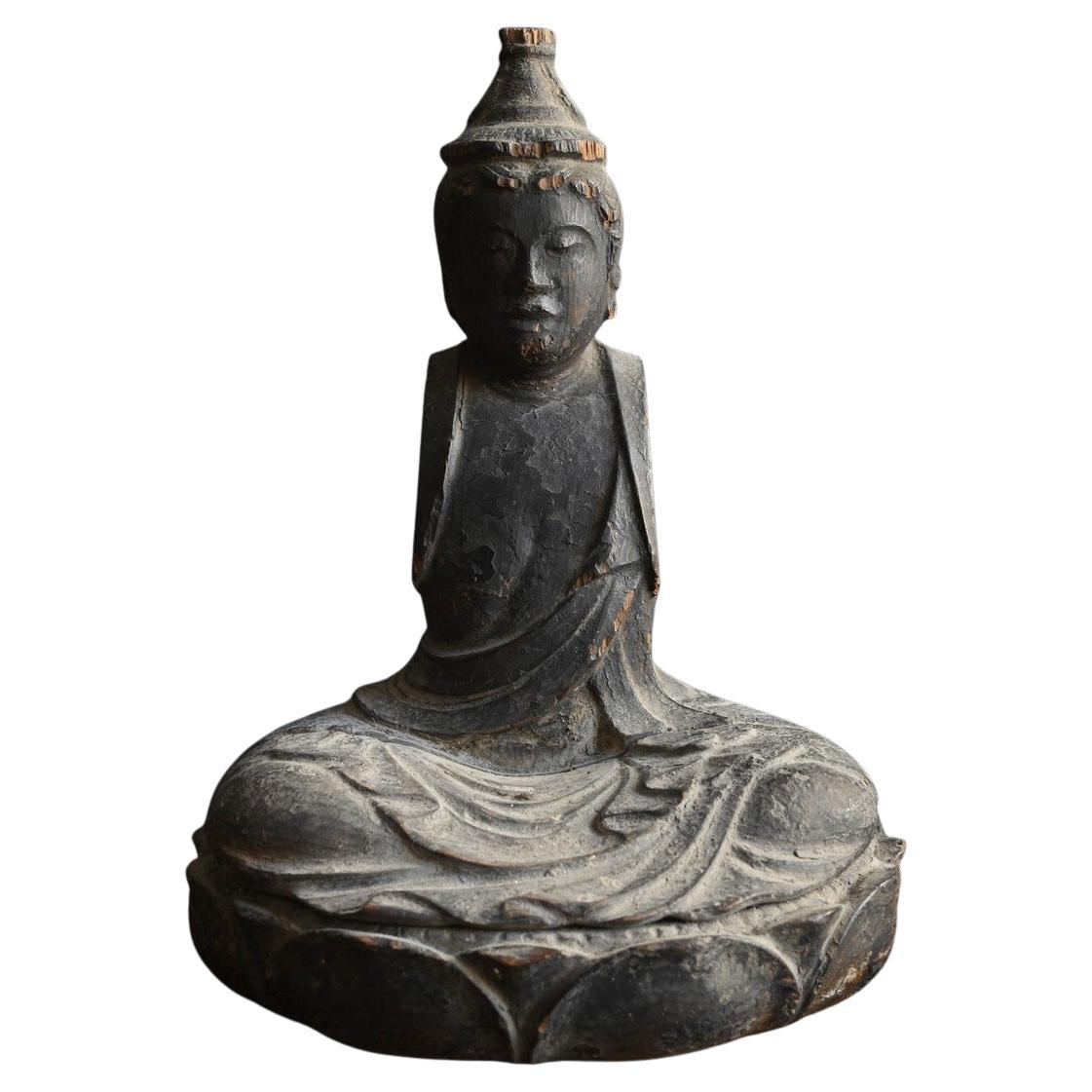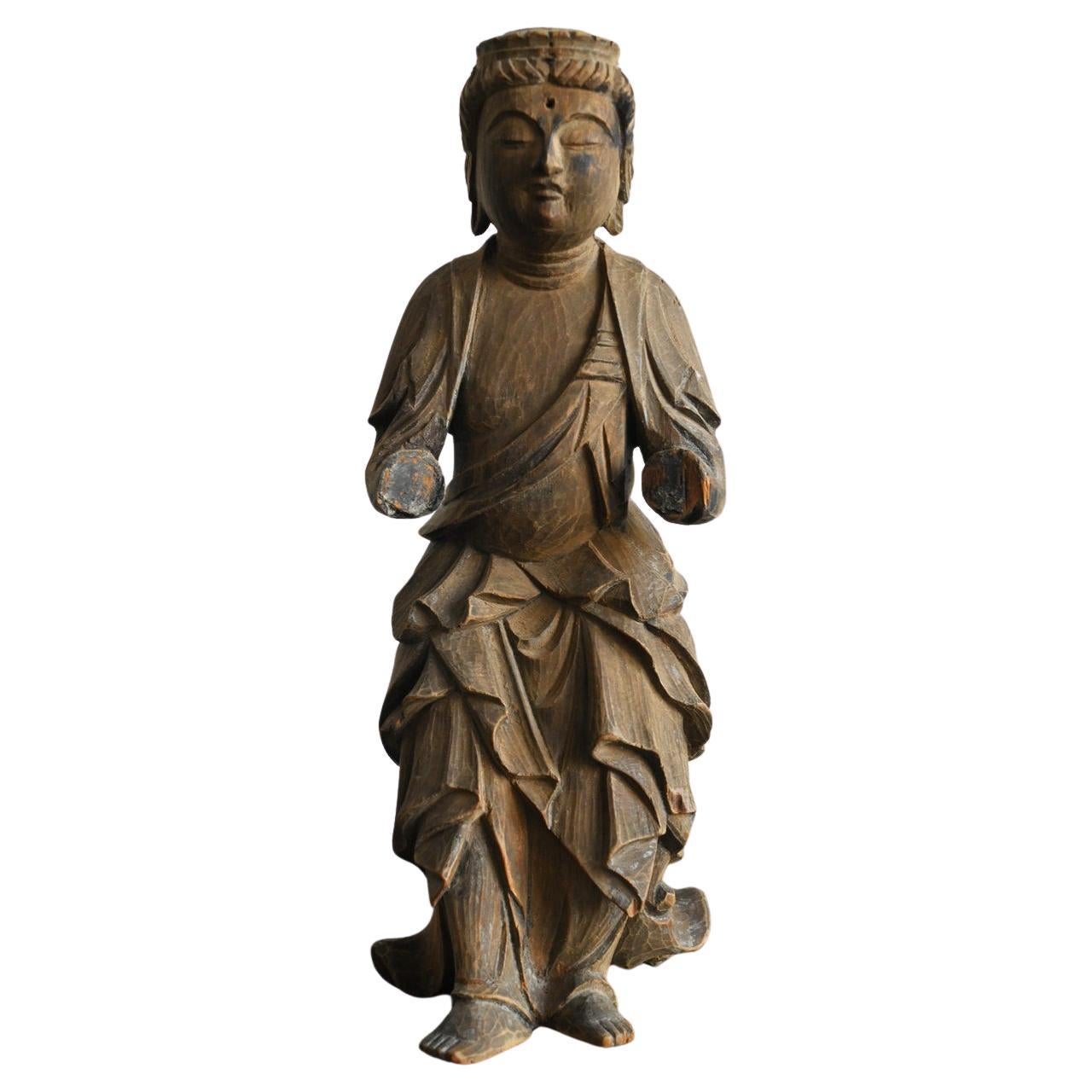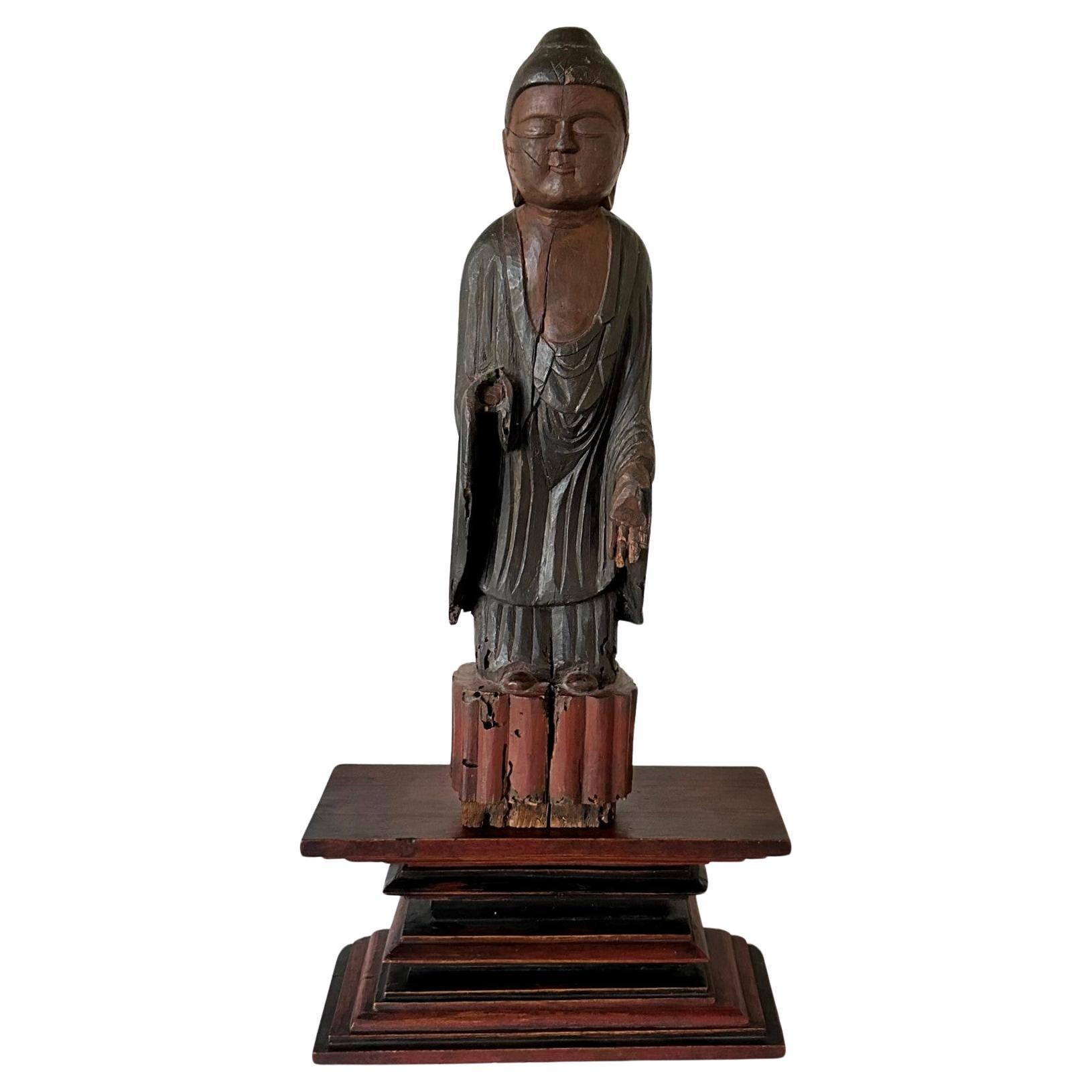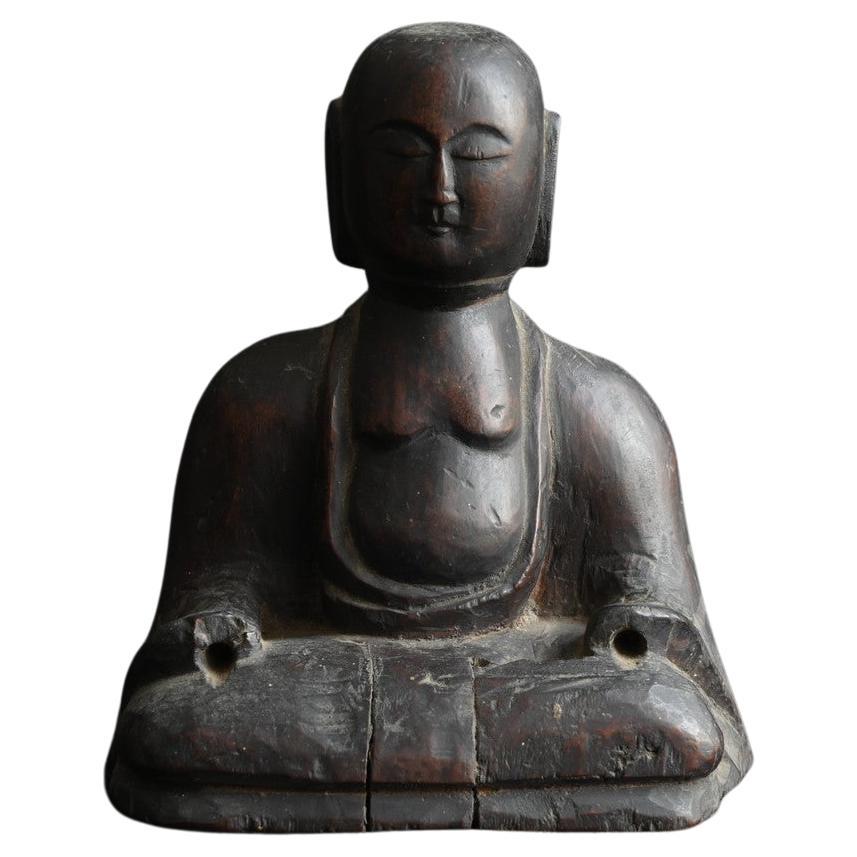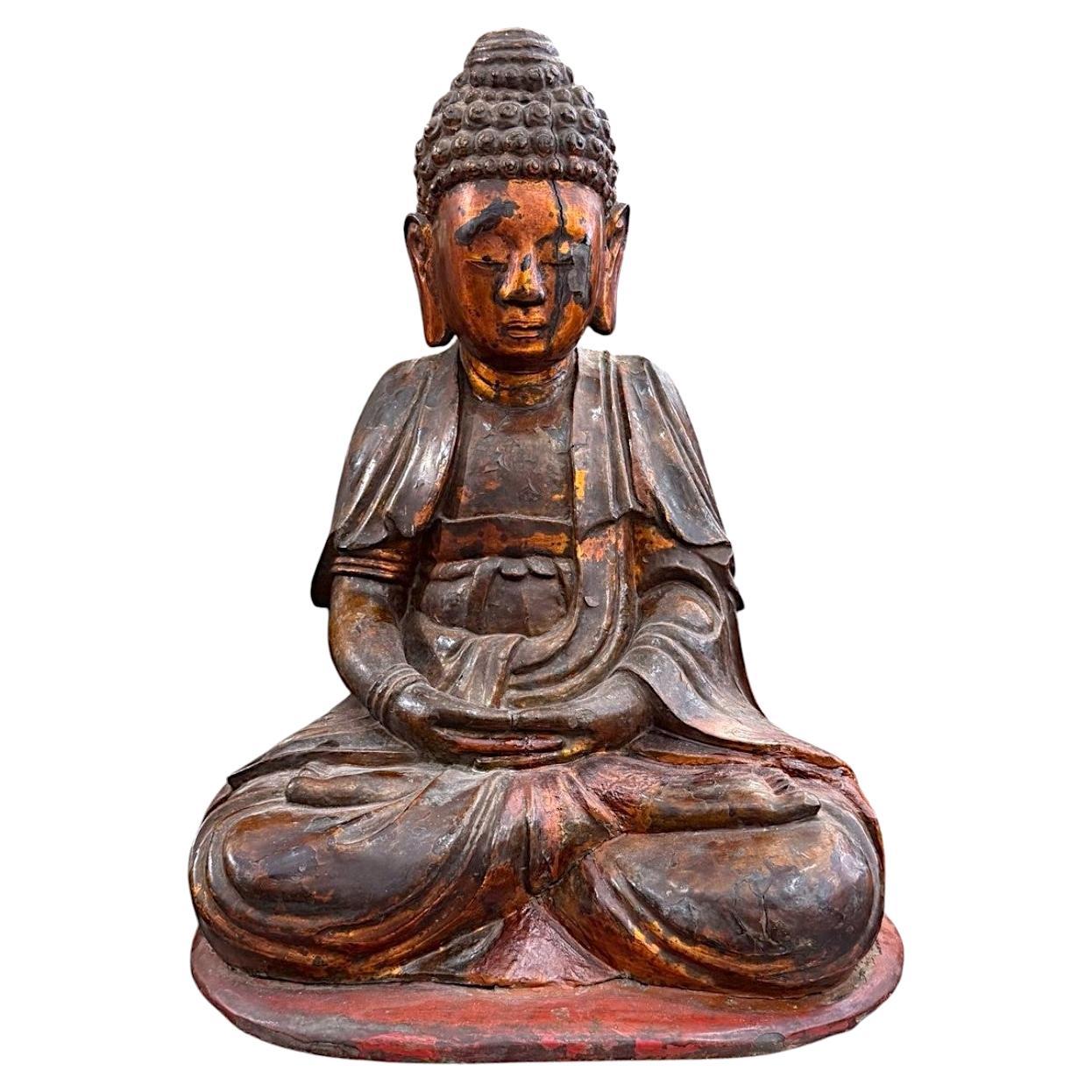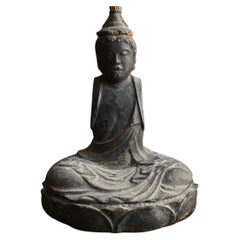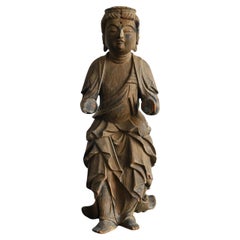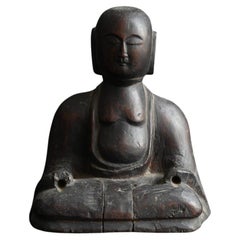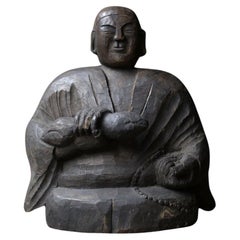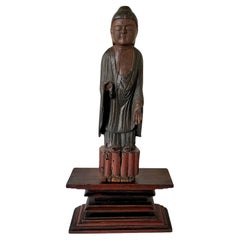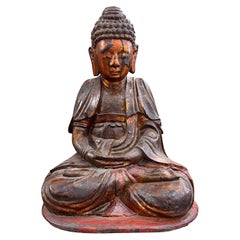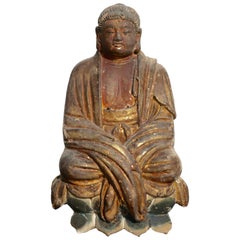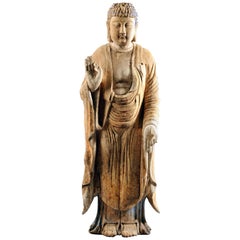Items Similar to Wooden Buddha statues from the Edo period in Japan/1800-1868/Late Edo period
Want more images or videos?
Request additional images or videos from the seller
1 of 20
Wooden Buddha statues from the Edo period in Japan/1800-1868/Late Edo period
$900
£682.90
€780.83
CA$1,257.06
A$1,397.68
CHF 729.79
MX$17,013.11
NOK 9,311.79
SEK 8,724.70
DKK 5,827.51
Shipping
Retrieving quote...The 1stDibs Promise:
Authenticity Guarantee,
Money-Back Guarantee,
24-Hour Cancellation
About the Item
This wooden Buddhist statue was made in the late to late Edo period.
It is thought to be a statue of Kannon Bodhisattva.
It was originally placed in a shrine and was painted, but these were lost and it is now in its current form.
It is rare that all existing Buddhist statues are in good condition, and many are slightly damaged or in this state.
However, it conveys the feelings of our ancestors who wanted to preserve at least the main body.
The material is thought to be cypress.
The front of the body is painted with a white pigment called gofun, which is mainly made of shells, and then colored on top of that.
However, when looking at Buddhist statues from the Edo period, the adhesion between this gofun and the coloring is weak, and in many cases the coloring peels off and the gofun also peels off at the same time.
This Buddha statue is thought to be a similar case.
However, the carving techniques for Buddhist statues were relatively skilled, and it is thought that it was carved by a sculptor who had studied Buddhist statue carving techniques.
As an aside, Nikko Toshogu Shrine was built at the beginning of the Edo period to worship the first shogun, Tokugawa Ieyasu.
At that time, many Buddhist sculptors were called from all over the country to work on temples and Buddhist statues.
After that, many temples were built in Edo, and many Buddhist sculptors were involved in the production of Buddhist statues for those temples.
These Buddhist sculptors continued to have many disciples in Edo, and passed on their techniques.
This Kannon Bodhisattva has a beautiful face, and looking at it calms the mind.
Although the hands are missing, the entire face and torso remain, so it is a Buddhist statue that you can enjoy looking at.
It is not a large Buddha statue, so it can be displayed in the living room, collection room, entrance, etc.
Why not place an item that gives you a glimpse of a part of Japanese history?
Weight: 250g
Buddha statue body size: W 8 cm D 4.2 cm H 4.6 cm
- Dimensions:Height: 11.03 in (28 cm)Width: 5.12 in (13 cm)Depth: 4.02 in (10.2 cm)
- Style:Edo (Of the Period)
- Materials and Techniques:
- Place of Origin:
- Period:
- Date of Manufacture:1800-1868
- Condition:
- Seller Location:Sammu-shi, JP
- Reference Number:1stDibs: LU5487241388262
About the Seller
5.0
Gold Seller
Premium sellers maintaining a 4.3+ rating and 24-hour response times
Established in 2015
1stDibs seller since 2020
1,604 sales on 1stDibs
Typical response time: 6 hours
- ShippingRetrieving quote...Shipping from: senzoku, Japan
- Return Policy
Authenticity Guarantee
In the unlikely event there’s an issue with an item’s authenticity, contact us within 1 year for a full refund. DetailsMoney-Back Guarantee
If your item is not as described, is damaged in transit, or does not arrive, contact us within 7 days for a full refund. Details24-Hour Cancellation
You have a 24-hour grace period in which to reconsider your purchase, with no questions asked.Vetted Professional Sellers
Our world-class sellers must adhere to strict standards for service and quality, maintaining the integrity of our listings.Price-Match Guarantee
If you find that a seller listed the same item for a lower price elsewhere, we’ll match it.Trusted Global Delivery
Our best-in-class carrier network provides specialized shipping options worldwide, including custom delivery.More From This Seller
View AllJapanese antique wooden Buddha statue / Edo period / 1600 to 1800
Located in Sammu-shi, Chiba
This wooden statue is a relic from Japan's Edo period, and within it lies a deep history that transcends time. Originally, it was part of a more intricate statue, likely adorned with...
Category
Antique 17th Century Japanese Edo Sculptures and Carvings
Materials
Cypress
Small wooden Buddha statue from the Edo period in Japan/17th to 19th century
Located in Sammu-shi, Chiba
We are pleased to present a small wood carving of a flanking Bodhisattva made around the Edo period.
This work is thought to be one of the Kannon ...
Category
Antique 18th Century Japanese Edo Figurative Sculptures
Materials
Cypress
Japanese antique wood carved Buddha/1800s/late Edo period/folk Buddha
Located in Sammu-shi, Chiba
This is a wooden Jizo Bodhisattva statue made in the late Edo period in Japan.
It is thought that they were not carved by Buddhist sculptors living in central cities such as Kyoto or...
Category
Antique 19th Century Japanese Edo Figurative Sculptures
Materials
Cypress
Antique Wooden Sculpture "Kobo Daishi" / Buddha Statues / Edo-Meiji Period
Located in Sammu-shi, Chiba
This is an old Japanese "Kobo Daishi" wooden figure.
"Kobo Daishi" means "Kukai".
"Kukai" was a monk from the early Heian period. His posthumous name was "Kobo Daishi". He is the fou...
Category
Antique 19th Century Japanese Edo Sculptures and Carvings
Materials
Cypress
Antique Japanese wooden Buddha statue/Edo period/seated Tathagata statue
Located in Sammu-shi, Chiba
This is a wooden Buddha statue made around the Edo period (1603-1868).
It is likely to be Amida Nyorai, the highest-ranking Buddha statue, which is an enlightened being.
This Buddha ...
Category
Antique 18th Century Japanese Edo Sculptures and Carvings
Materials
Cypress
Japanese antique wooden Buddha statue/Acala/Late Edo period/19th century
Located in Sammu-shi, Chiba
This is a statue of Fudō Myōō (Acala), believed to have been created in Japan during the late Edo period, specifically in the year 1804. On the back, there is an ink inscription that...
Category
Antique 19th Century Japanese Edo Sculptures and Carvings
Materials
Wood
You May Also Like
Antique Japanese Carved Village Buddha Enku Style
Located in Atlanta, GA
A carved wood buddha with lacquered surface in the style of Erku (1632–1695), a monk from Edo period who was famous for hand-carving Buddha statues in a primitive style. From a single wood block of what appears to be cedar, the standing buddha was carved in an unpolished manner with exposed knife strokes that effectively depicted a subtly smiling face and the folding of the cascading robes. The rustic style is full of Mingei charm being a great example of Japanese Buddhism...
Category
Antique 18th Century Japanese Edo Sculptures and Carvings
Materials
Wood
Edo Period Vietnamese Seated Buddha Sculpture, 19th Century
Located in NICE, FR
A serene and evocative seated Vietnamese Buddha sculpture. Expertly hand-carved from wood, this statue captures the timeless grace and spiritual depth of Buddhist iconography. The Bu...
Category
Antique Late 19th Century Vietnamese Edo Sculptures and Carvings
Materials
Wood
Early Ming Dynasty Chinese Buddha Statue, circa 14th Century
Located in Dallas, TX
A very fine late Yuan to early Ming Chinese terracotta gilt and polychrome painted Buddha figure, he is dressed in thick robes, his hair arranged in ty...
Category
Antique 15th Century and Earlier Chinese Ming Figurative Sculptures
Materials
Terracotta
Chinese Carved Wood Teaching Buddha in Ming Style
Located in Atlanta, GA
A statue of standing Buddha (Shakyamuni), finely carved out a single block of wood (might be cypress based on the wood grains). Attired in a flowing robe with open chest, the Buddha ...
Category
Antique 19th Century Chinese Ming Sculptures and Carvings
Materials
Wood
Large Japnese Buddha -Carved by Enku?
Located in Ukiah, CA
Life-size Carved Wood Buddha, possibly by the great 17thC Japanese carver Enku. One of the all-time greats, this piece has all of the qualities of one of his best (look online or at ...
Category
Antique 17th Century Japanese Sculptures and Carvings
Materials
Wood
$72,000 Sale Price
20% Off
Chinese Polychrome Painted & Carved Wood Buddha
Located in Astoria, NY
Chinese Polychrome Painted and Carved Wood Standing Buddha Sculpture, possibly Ming Dynasty, remnants of wax seal to crown of head. 26.5" H x 8.5" W x 7" D. Provenance: From a West 1...
Category
Antique Early 19th Century Chinese Qing Sculptures and Carvings
Materials
Wood
More Ways To Browse
Antique Cypress
Antique Cypress Furniture
Hand Carved Wooden Statue
Entrance Statue
Asian Display Case
19th Century Shell Sculpture
Carved Wooden Shell
Japanese Temple Sculpture
Hand Carved Wooden Buddha
Antique Japanese Statues
Large Buddha Statue
Japanese Antique Shrines
Japanese Buddha Sculpture
Bodhisattva Statue
Buddhist Shrine
Buddha Shrine
Torso Statue
Japanese Edo Buddha
